The Dancing Queens of Sudan
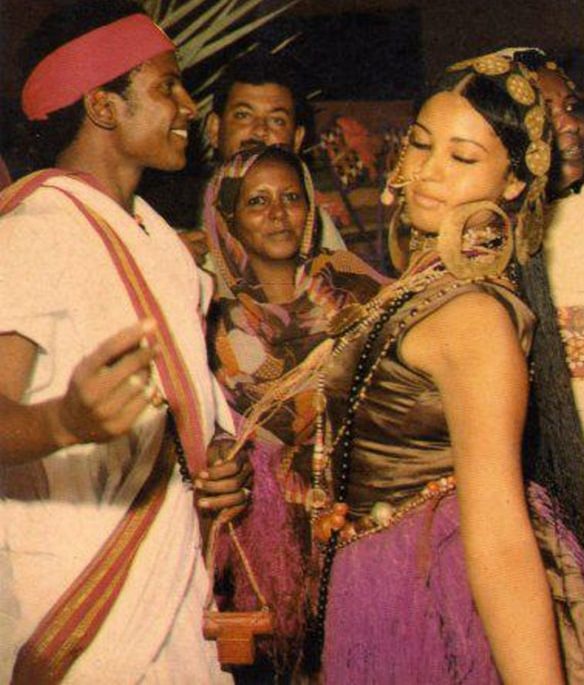
With a distinctive culture that is both Arab and African yet neither just Arab nor African, Sudanese weddings comprise many unique rituals. From pharaonic traditions that were passed down for thousands of years to western style customs, Sudanese wedding ceremonies are a blend of the past and the present.
Once considered an integral element of every wedding, Ragsat Al ‘Aroos or the Bridal Dance is a popular custom performed during wedding ceremonies. A Sudanese wedding ceremony can last for days and sometimes even more than a week.
Sudanese wedding ceremonies captivate many with their rich traditions and vibrant celebrations. Interestingly, this cultural event has also piqued the interest of online casino enthusiasts. Online casinos offer a unique blend of entertainment and excitement drawing in players from diverse backgrounds, more about which you can find here: https://crballet.com. The allure of gambling games in these virtual platforms often parallels the fascination with traditional ceremonies like Sudanese weddings. Just as these weddings are steeped in ritual and significance, online casinos provide an engaging experience that combines skill, strategy, and chance.
In the realm of online casinos, players can immerse themselves in a variety of gambling games that simulate the thrill of risk and reward. From classic table games like poker and blackjack to innovative slot machines and live dealer options, these platforms cater to a broad audience. The excitement of gambling games is enhanced by the convenience of playing from home or on the go, making it an appealing choice for those seeking both entertainment and potential winnings.
A historic dance tradition
The bridal dance has always been significant throughout history. A wedding was not considered complete without this tradition. Deeply rooted in the country’s history, the ritual dates back to the Kingdom of Kush where it was called ‘The Dance of the God of Fertility’, and was associated with marriage; performed by both men and women during wedding ceremonies. Despite being a significant part of Sudanese culture, its purpose and public perception has evolved over the years and today, the practice remains a topic of debate in Sudanese society, where religious constrictions and beliefs have polarised public opinion. Reasons for having or opting out of a bridal dance differ, and can be religious, social, political, or financial. While the bridal dance remains a social controversy, its historical and cultural significance is undeniable.
During the Kush civilisation, the bridal dance was initially performed to highlight the bride’s physical health and beauty. Often viewed as ‘erotic’, the bridal dance was much simpler and private, and signified its true purpose — to showcase a bride’s femininity. But today, it also serves as a symbol of their socio-economic status and/or political or religious beliefs.
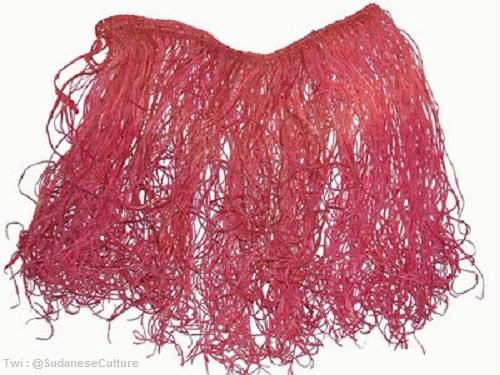
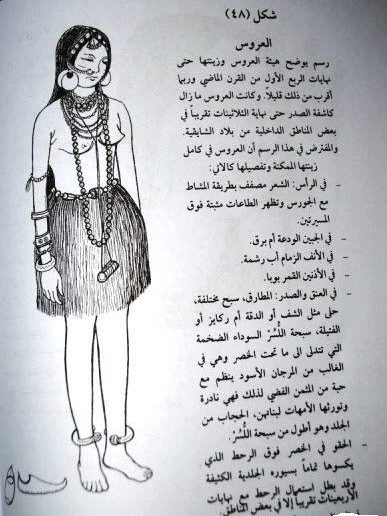 A hundred years ago, during the traditional bridal dance, Sudanese brides would dance topless, wearing nothing but a string-like leather hula skirt called a rahat and during the dance, each string of the rahat would be pulled or cut off, a practice that is referred to as Qate’ Al Rahat, literally symbolising the loss of virginity. The skirt would then be thrown into the crowd, signifying the end of her maidenhood. The purpose was to show her in-laws (especially the older ones) her childbearing features and her sexual health. This event would usually only include close family, friends and neighbours, who would perform the songs and teach the bride different dance moves as part of their contribution to the wedding.
A hundred years ago, during the traditional bridal dance, Sudanese brides would dance topless, wearing nothing but a string-like leather hula skirt called a rahat and during the dance, each string of the rahat would be pulled or cut off, a practice that is referred to as Qate’ Al Rahat, literally symbolising the loss of virginity. The skirt would then be thrown into the crowd, signifying the end of her maidenhood. The purpose was to show her in-laws (especially the older ones) her childbearing features and her sexual health. This event would usually only include close family, friends and neighbours, who would perform the songs and teach the bride different dance moves as part of their contribution to the wedding.
The preparations
Now, with the lucrative wedding and event planning industry, the bridal dance has become more elaborate, and includes several skimpy outfit changes, swanky venues, a professional drummer and/or singer (tagtaga/ghanaya), and a professional dance teacher, known as a ragasa in Sudan. Earlier, both men and women were part of the audience, but now they are usually limited to women, with the groom being the only male.
What makes the bridal dance special is that it is a unique tradition specific to Sudan. Preparations for the dance also include beautification rituals such as dukhan, a traditional Sudanese body incensing beauty practice where the body is smoked with special scented wood, and dilka, a body scrub usually performed after dukhan, during a period called habs or the ‘lockup’ where the bride is expected to stay home for at least a month prior to her wedding. By the end of it, the bride will emerge on her wedding day with bronzed skin, a golden glow, and hands covered in intricate henna.
This shift of a longstanding tradition is arguably due to the historical blueprint of Sudan. Originating from the Kush civilisation, the bridal dance has survived through Arab, Egyptian, Ottoman and British rule, among several other influences. Sudan’s strong Islamic presence has been a source of influence in politics, even touching on cultural traditions that have been vilified under Sharia Law. While religious restrictions have been unsuccessful in abolishing cultural practices including the bridal dance, the role of religion has reshaped their perceptions. Many women of older generations like the khaltos (aunties) or habobat (grandmothers) who had performed the bridal dance during their wedding say they should not have performed it back then but ‘they did not know better’ and were ‘ignorant’.
To dance or not to dance?

However, the bridal dance is popular amongst younger generations with many sharing strong opinions about this tradition. ‘I love it!’ says Iman*, who performed her bridal dance during her wedding in Washington, DC. Iman prepared for her dance by training with a US-based dance teacher named Sameera. However, she decided to have a female-only audience because her husband was Sudanese-American and a lot of his friends and family were not sensitised to the tradition. Interestingly, it was the men in Iman’s family who did not like being excluded from the event. Looking back, Iman recommends other women to do it on their own terms and comfort.
Twenty-nine-year-old soon-to-be bride Safiya calls it a celebration of womanhood and femininity. While Iman was lucky enough to find a ragasa nearby, for Sarah, there will be no bridal dance because she’s in a foreign country with no access to teachers or ‘allamat and does not have enough time to perfect her moves.
‘It is a once-in-lifetime chance to be a Beyoncé and have the crowd cheer for you, even though it also means you’re standing on stage in a skimpy dress, being preyed on like wild cats,’ says Sarah. Now, a symbol of social hierarchy, she knows that with ragees you cannot just swing it and the criticism can be beyond those of the faint of heart, so underneath that glow, you better have some tough skin.
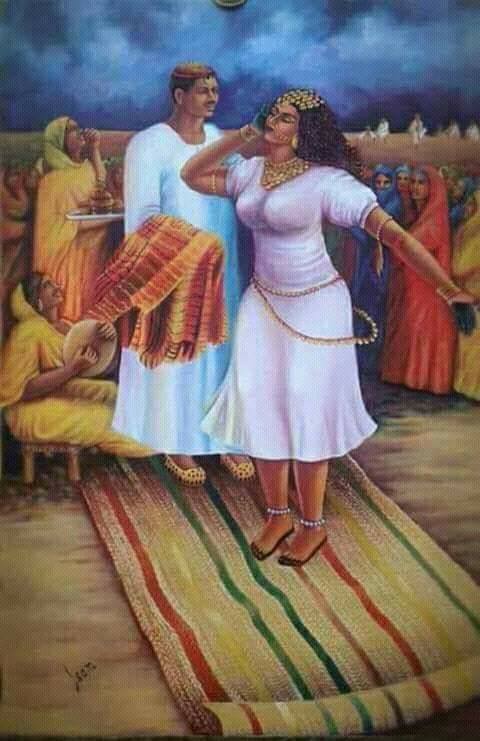 Most Sudanese social functions are filled with gossip and weddings are no exceptions. Fatma* appreciates the beauty behind the tradition but dislikes the backbiting and nit-picking, a problem she often faces within Sudanese communities. And while those like Asmaa* believe the tradition objectifies women, others like Rama share a love/hate relationship with it but also believe the tradition objectifies women. As a result, many brides (and their grooms) decide not to include the bridal dance as part of their wedding ceremonies.
Most Sudanese social functions are filled with gossip and weddings are no exceptions. Fatma* appreciates the beauty behind the tradition but dislikes the backbiting and nit-picking, a problem she often faces within Sudanese communities. And while those like Asmaa* believe the tradition objectifies women, others like Rama share a love/hate relationship with it but also believe the tradition objectifies women. As a result, many brides (and their grooms) decide not to include the bridal dance as part of their wedding ceremonies.
‘Not only does this ritual showcase Sudanese identity, it also acts as a platform for brides to express their individual creativity; from designing the outfits to choosing colour schemes. This new twist on the dance gives the ‘modern’ Sudanese woman control of the narrative,’ says Rama.
Although there is a large debate on the bridal dance, it’s still a popular wedding tradition. Leena* says that she went to three such events this summer and is glad it is becoming popular again.
Don’t forget the groom
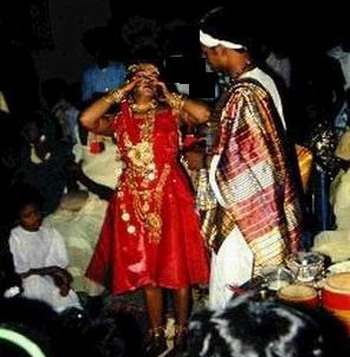 Although the bridal dance may be called Ragis Al ‘Aroos, the groom also plays an important role in the dance. While the bride is on stage, the groom is expected to stand next to her and catch her when she falls as part of the dance routine. Bear in mind, the groom is probably the only man in the room.
Although the bridal dance may be called Ragis Al ‘Aroos, the groom also plays an important role in the dance. While the bride is on stage, the groom is expected to stand next to her and catch her when she falls as part of the dance routine. Bear in mind, the groom is probably the only man in the room.
This is one of the reasons men choose not to do it. Khalid* believes the bridal dance is similar to the concept of a ‘strip show’, saying that it’s especially awkward with his grandmother and aunts there and he personally wouldn’t want his bride to perform the dance.
Meanwhile, 21-year old student Noaman doesn’t mind it because of its cultural component to the wedding. Other duties of the groom include snapping his fingers with the music, showering the audience with candy and money, and sharing a glass of milk with his new wife.
Bridal dances have now evolved into a social competition where brides are looking for the best singers/drummers and dancers. With the emergence of artists such as Gisma, Insaf Madani, Iman Ali who is also known as Shengota, and Baha AbdulKarim, this style of coaching dance has become popular in Khartoum and has spread to other cities and towns.
The ragasa specialises in a type of dance-songs called aghani al daluka or drum songs as well as aghani al banat or girls songs, which often revolve around marriage, beauty, love, and praise. Once a casual event, bringing families and friends together, the bridal dance is now a formal occasion that requires personalised invites, and a set of regulations (e.g. no children, no cameras or phones).
Young Sudanese woman Mariam* believes it’s not that significant of a tradition, so whether you’re doing it for the culture or just for fun, just do what makes you comfortable.
Check out this YouTube video of Sudanese students in America performing the bridal dance as part of a cultural show:
And here’s a rare video of a Sudanese bridal dance attended by both men and women, which has gone viral online and covered by many news channels in the region:
It is important to note that the bridal dance is a very private event where many brides refrain from video tapping their bridal dance or from allowing attending guests to have their phones with them to avoid having the dance video going viral and getting into the wrong hands. Phones are usually taken away during the event. Anyone caught recording the dance risks being removed from the event, having their phone permanently taken away and the police might get involved as well. Many of the videos of the bridal dance found online have most likely been leaked and posted without the bride’s consent or knowledge.
Note: The names with an asterix * used in this article are not real as the interviewees chose to share their opinions in anonymity.
 An aspiring peacemaker, Yousra Khalil graduated with an M.A. in International Affairs with a concentration in peace and conflict resolution from the George Washington University. When she’s not working on countering violent extremism, she enjoys trivia, naps, travelling, memes, and good food. Currently based in Washington, DC, Yousra splits her time between the US, Qatar and Sudan.
An aspiring peacemaker, Yousra Khalil graduated with an M.A. in International Affairs with a concentration in peace and conflict resolution from the George Washington University. When she’s not working on countering violent extremism, she enjoys trivia, naps, travelling, memes, and good food. Currently based in Washington, DC, Yousra splits her time between the US, Qatar and Sudan.


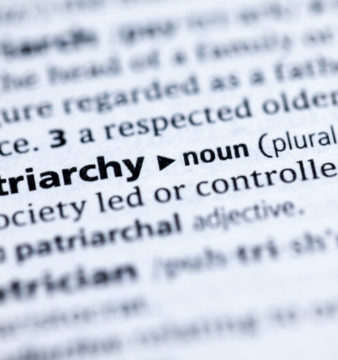
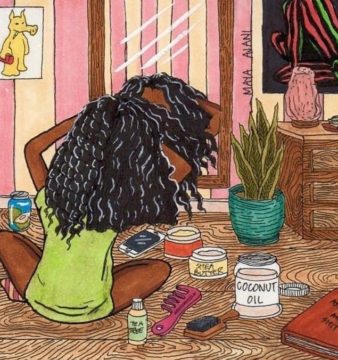
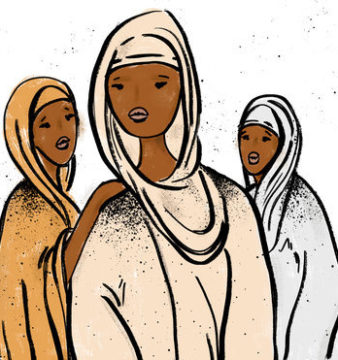
Good documentation and beautiful. Thank you
Azzam Farah
Qatar